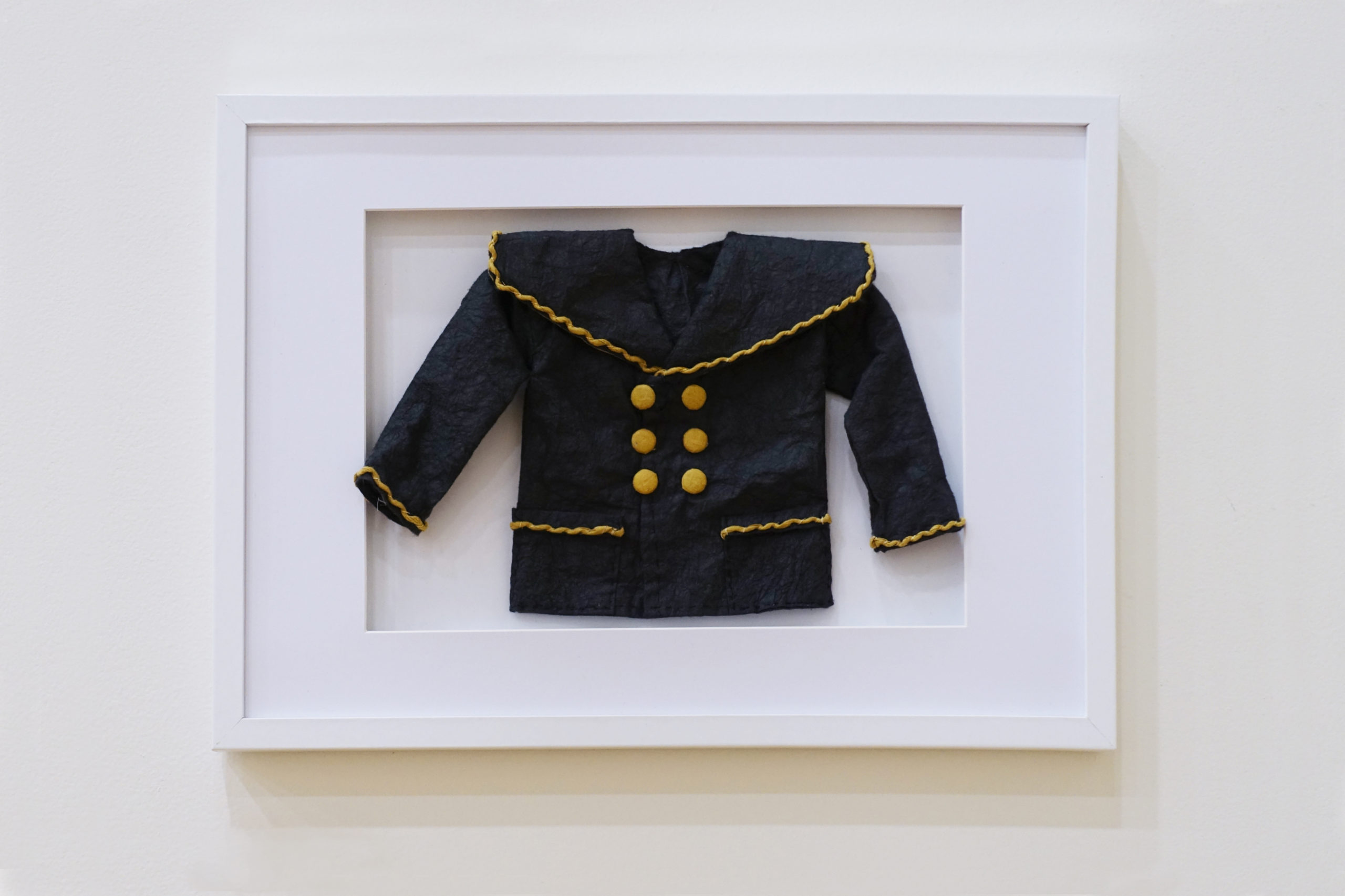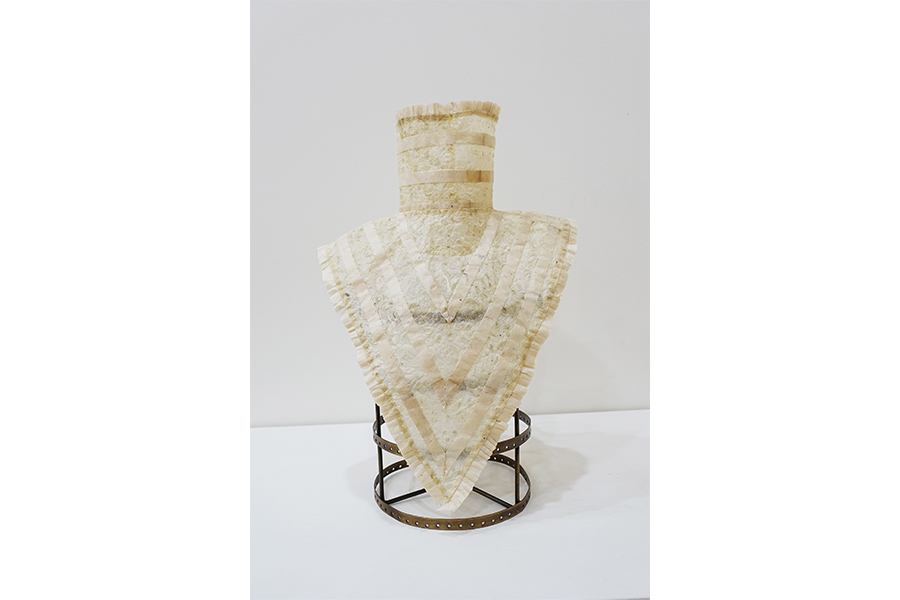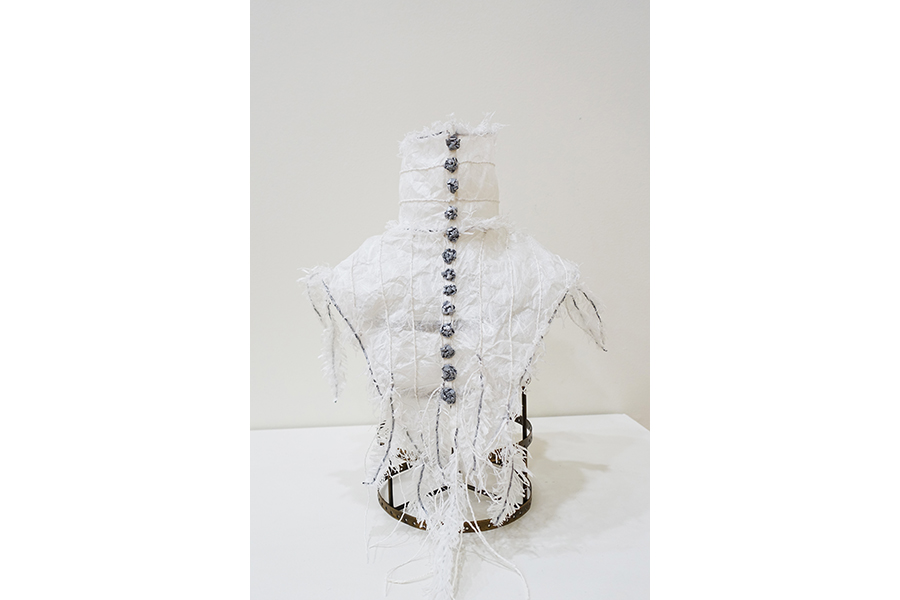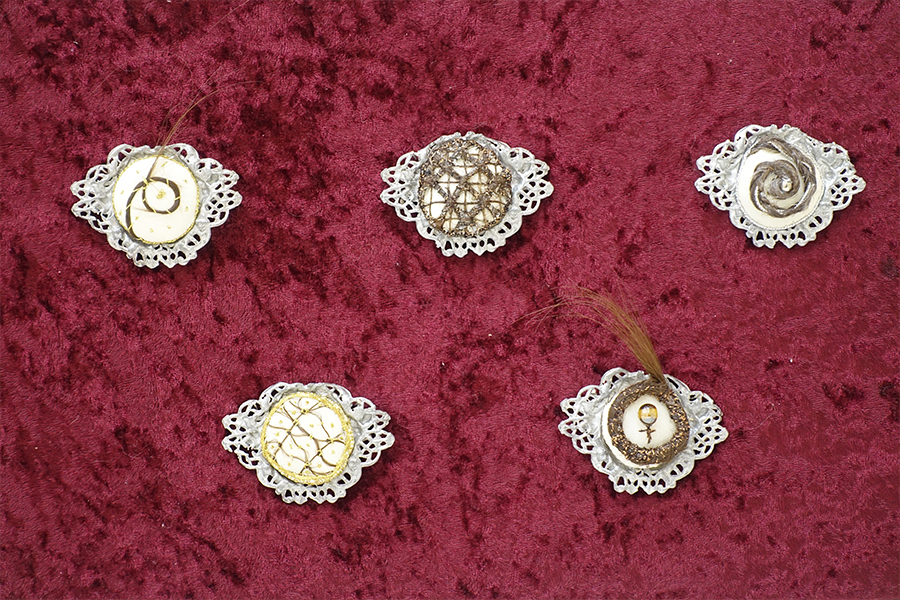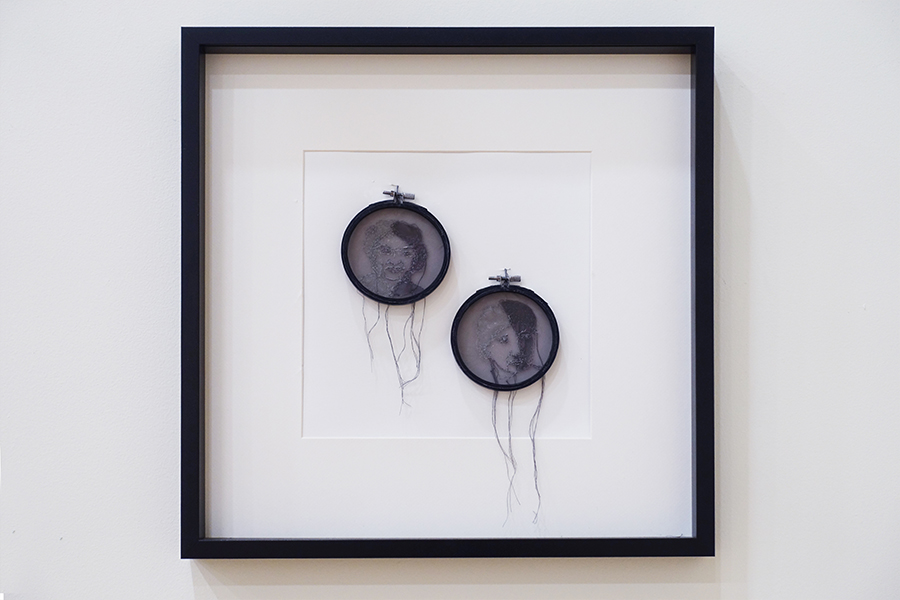Landscape Familia
Anzara Clark
Initially intended as a non-figurative portrait project exploring the lives of ancestors that lived within Moonee Valley; both the onset of COVID-19 and the aspects of my family research that called to me most insistently, have seen the project focus turn to family identity and inheritance across a number of domains. The common thread between those domains is that they are silent and unseen, but no less potent in influencing family and individual identity within and across the seven generations that have called this country home.
Drawing on old family photos, letters and documents and the heirloom objects that I am custodian of; I have reflected on aspects of inheritance, stories that have been passed down and those that remain untold, the social contexts and events through which my ancestors lived, the characteristics passed down through DNA, the potential impact of epigenetic factors and the influence of mitochondrial inheritance.
What has emerged is a body of work that meanders through my family history and evolution, both imagining and fleshing out the strengths and vulnerabilities that have persisted though generations, ensured the survival and continuance of the family line, have come to rest in me and in turn are passed on to my descendants. In this body of work the past, present and the future are merged.
This dress was made during the first lockdown in Victoria as an intuitive response to the musings and mental wanderings that arose during this period.
It is a narrative and a context responsive work that led me to think deeply about how we respond to challenges; where we garner our resilience and where our capacity to deal with challenges comes from. It was made at the same time I was researching for the Landscape Familia project and become a trigger for a shift in the focus of this project; from representations of the external lives of my ancestors to reflections on the genetic, psychological and energetic inheritances they have passed down through the generations.
Dress of Solitary Musings. 2020. 110cm high x 90cm wide x 8cm deep. Various papers, threads, paper thread, paper yarn, found objects.
Garments are markers of cultural and individual identity. While they can tell us much about a person and their lives, they only touch the surface. Remove the body and the individual story disappears. The narrative that remains may be poetic, but is unanchored and speculative, with an ethereal quality that is not present in embodied garments
Skins #1 and #2. 2020.
25cm high x 15cm wide (unframed)
Various papers, thread, lace, buttons
.
In an old family photo (circa 1910) of my young grandmother and her two older sisters, they are all dressed in the same style of white dress with elaborate high-necked collars. They stare straight ahead into the camera lens, no expression on their faces. Photographs like this always leave me wondering – What happened to the subjects? What became of their lives? I know a small part of this story. Like most women of their time, they were absorbed into the domestic sphere, living lives supporting others, with no options to live life as they wanted. Except for my grandmother. Independent and vivacious, she travelled as a single woman in a time when chaperones were required. She pursued a career in nursing and she married late and to a younger man. Of course, she didn’t truly avoid the gilded cage of gendered stereotypes and life possibilities; but she escaped it for a while and lived her life to the full before the social cage caught up with her.
(a) Three Sisters. 2020.
35cm high x 28cm wide x 20 cm deep
Collars (x 3) – Various papers, threads, embossing, smocking, hand stitching.
(b) The One That Got Away. 2020.
80cmwide x 50cm high (unframed).
Linocut print, hand coloured.
.
As fascinated as I am with old photographs and the images my forbears chose to frame and display, I am equally fascinated by the inner life behind the image and the character behind the face. What colours reveal the person, what shapes capture the essence of who they were and their life stories?
Portraits of my Ancestors. 2019. 9cm high x 45cm wide. Various papers, thread, paper yarn, ribbon.
Treasures lie within us that we don’t even know are there until a significant life event causes them to be revealed. Some of our gifts are bestowed through our own experiences and the way we respond to them. Some are bestowed through our DNA inheritance and some through our epigenetic inheritance (inheritance through mechanisms other than genetic DNA). Epigenetics considers how trauma and the response of individuals to it can be passed down through many generations, impacting descendants who have no memory or have never heard the trauma stories of their ancestors. I like to think that this process is also true for the life enhancing and character-building life changing experiences of our ancestors. That they have passed down through the generations, strengths and character gifts that we can bring to bear to meet the challenges of our own lives. Identifying what these gifts are may be the first step towards understanding them and harnessing the power they carry.
The Wealth Within. 2020.
51cm high x 37cm wide x 25 cm deep
Various papers, adhesive, wire, paint.
.
Mitochondrial Inheritance is a form of physiological inheritance, specifically related to energy production and function patterns. Passed down only from mothers to their children, recent research suggests that mitochondrial inheritance also has significant involvement, for better or for worse, in numerous functional aspects; including our immunity, homeostasis, mental health and wellbeing. This tiny part of every cell of my body, inherited from my mother, from my mother’s mother and my ancestor mothers has such a fundamental influence on my endurance, my resilience and in the way I navigate my world.
Inheritance – Endurance, Resilience, Quiet Perseverance. 2020. 3 x prints. Each 14.5cm x 14.5 cm (unframed). 43cm x 43cm (framed) Drypoint etching, thread.
Victorian mourning jewellery incorporated hair from the dead in beautiful jewellery pieces, enabling the wearer to keep the departed person close to them at all times. I do not have hair from my ancestors, but my hair and the hair of my children contains DNA from those who came before. Using the motif of Victorian hair mourning jewellery as iconography, my ancestors are always close and they are remembered in my body and will be remembered beyond me in the bodies of my descendants.
My DNA Remembers Them. 2020.
Hair Brooches. Each 4cm high x 6 cm wide.
Hair, silk, wadding, thread, found metal brooch settings
While obituaries, letters and newspaper stories articulate the lives and activities of my male ancestors, the stories of my female ancestors remain largely unknown and untold. Theirs are narratives of care, support and nourishing others. The stories of the women that came before me are told in the remnants of their labours, in the objects they collected and used, in the textiles they created and handed down to their daughters and in the domestic records they left behind.
Nourish. 2020.
75cm high x 36cm wide.
Reclaimed textile, solar printing of heirloom objects, thread, recipe handed down from my Great Grandmother.
The last living two of my relatives who lived or still live in the Moonee Valley Shire are rendered in stitched portraits incorporating hair.
The Final Two. 2018.
2 x embroideries. Each 11cm diameter x 1 cm deep.
Silk chiffon, embroidery thread, hair, embroidery hoops.
My ancestors were migrants. They came by boat. They struggled and survived in an unfamiliar landscape and environment until they learned how to thrive. For seven generations we have been here. How long is long enough to live in a place before belonging to its land?
Migration Story. 2020.
110cm high x 65cm wide (unframed)
Various papers, threads, textiles, ink, plant material, found objects.
In a fast-paced world that values uniformity, machine made precision, perfection and material worth; slow hand stitching can be seen as a radical act. Subverting the contemporary norms of production and ascribing value, my practice embodies an attitude of meticulous imperfection. Immersive and meditative I celebrate divergence, individuality and imperfection through my creative processes. At the same time, meticulous in focus and application, my process attributes value to the humanity of the work - to the steady hand, the focussed eye, the one-pointed attention, the creative flow and the dedicated heart.
Meticulous Imperfection: hand stitching as a radical act. 2020. Video
Artist talk with Anzara Clark
Artist statement
Anzara Clark’s practice focuses on the application of textile techniques to paper. Clark uses new and repurposed papers, along with textiles and other recycled and found materials to explore layered narratives and visual poetics. Garment forms and fragments feature prominently in her work as rich vehicles for storytelling and visual poetry. Repetitive processes obscure the nature of her materials until viewed closely and her forms challenge assumptions about material value.
While she works across a range of mediums and genres, she remains fascinated with exploring themes of individual and cultural identity, archetypes and icons, memory and myth, fragility and resilience, significant human transitions and transformative experiences. Anzara’s work is driven by an intense curiosity that finds endless inspiration and opportunities for creative experimentation from seeking beauty in damage, wounding and imperfection.






